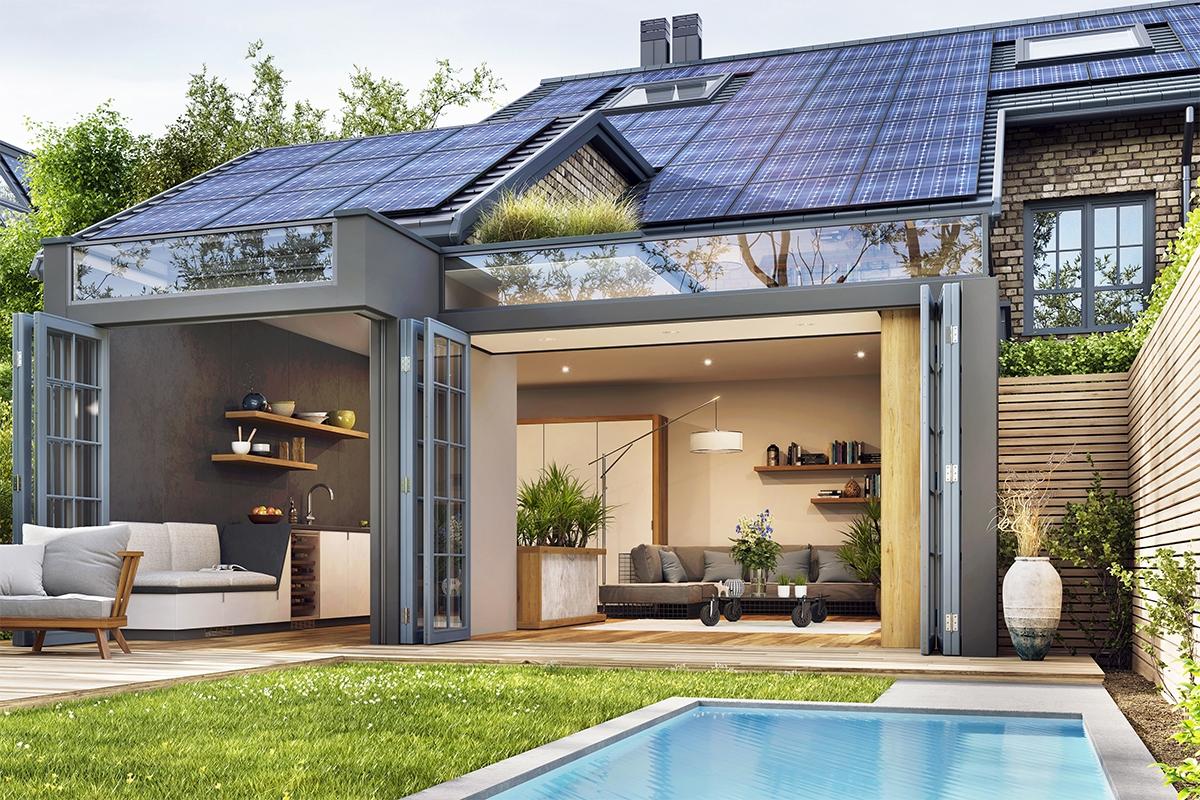

Renewable energy is a great way to help the environment as well as our convenience. One of the greatest sources of renewable energy is solar energy which can be achieved by using solar panels.
However, it's not just as simple as going out and purchasing any solar panel. There are a lot of things to consider such as the quality of the materials, solar cell efficiency, and the location where these will be placed.
What is Solar Cell Efficiency?
Solar-cell efficiency refers to the portion of energy in the form of sunlight that can be converted via photovoltaics into electricity by the solar cell. All solar panels will vary in performance between different manufacturers.
The average solar cell efficiency in solar panels ranges from around 15-22%. The higher the solar cell efficiency, the more solar power it'll produce per square meter. With that being said, higher efficacy panels would mean they will be more expensive.Here are the top 5 most efficient solar panels.
| Brand | Power | Efficiency |
|---|---|---|
| SunPower | 440 W | 22.8% |
| Canadian Solar | 440 W | 22.5% |
| REC | 430 W | 22.3% |
| Panasonic | 430 W | 22.2% |

Factors affecting Solar Cell Efficiency
Photovoltaic (PV) cells make up a solar panel. The efficiency of these cells is calculated by how much sunlight is converted into electricity by semiconductors. Different factors can affect the efficiency of solar panels such as:
- Sunlight, temperature, and weather. Solar panels are greatly affected by the weather since this affects how hot the panels get. It's a common misconception that the hotter the weather, the greater solar energy is produced. This is false and would make your solar panels less efficient. According to standards, 25-degree celsius temperature is the optimum range for photovoltaic solar panels.
- Dirt and grime. When there is an excessive build-up of dirt on the solar panel, it can affect its efficacy. Regular cleaning of solar panels would easily solve this issue.
- Solar panel inclination. Believe it or not, just the mere positioning of your solar panel can make a difference. The solar panel angle or tilt is important to make use of the sun's radiation - it must always be tilted towards the sun.
- Solar panel materials. This can be highly dependent on whatever manufacturer is making the materials.
What are Solar Panels made out of?
Generally, there are three main types of solar panels. It's important to know how each type works to know which can work well for you.
Monocrystalline
These solar panels are made out of high-purity silicon and are seen as the most efficient. However, this type is the most expensive.
Polycrystalline
This type costs less and in consequence, is less efficient than monocrystalline. Though, it is a great option for bigger facilities that have more space.
Thin-film
This is the least efficient type but since it's lighter weight, it's more adaptable to numerous uses including solar paneling for transportation.
A solar panel in Australia can produce up to 4 times more electricity annually than the same panel in Germany — not because the panel itself is more efficient, but because Australia has much more sunlight (solar irradiance).
| Country | Average Solar Irradiance (kWh/m²/day) |
|---|---|
| Australia | 4.5 to 6.0 kWh/m²/day (depending on location) |
| Germany | 2.5 to 3.0 kWh/m²/day (average) |
During his 2025 address at the National Press Club, John Grimes, CEO of the Smart Energy Council, made exactly this point. He said:
"If you put a solar panel in Australia and the exact same solar panel in Germany... it will produce up to four times more energy"
Australia - World-Leading Solar Cell Research
Prof. Martin Green and his team at the University of New South Wales (UNSW) developed the most efficient silicon solar cells in the world through the 1980s–2000s.
Many of the world's top solar researchers and solar startup founders were trained in Australia.
To deliver solar panels to the world efficiently, there is an opinion by some, that a powerhouse like China is important in the manufacture and economies of scale.

Should we give renewable solar energy a try?
The short answer is: yes!
Not only will you be contributing more to the environment, but you are also doing your own pockets. While it may seem like an expensive investment at first, solar panels are known to last about 30 years.
Solar panels will lose their efficiency over time but slowly. According to the US National Renewable Energy Laboratory (NREL), their output degrades at a rate of about 0.5% per year. This would only mean that they won't be producing as much electricity from the same amount of sunlight as they used to.
Having a clean and sustainable source of energy is a worthwhile investment; solar energy is one of the best alternative sources to make your household or facility a more sustainable area.









